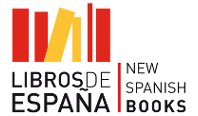-
 Memories of Lorca
Memories of Lorca
New Spanish Books: The online guide of titles from Spanish publishers and literary agents with rights for translation in the UK. To consult titles available in other markets please click on the above links.
La Huella de Lorca
AUTHOR: Carlos Hernández, El Torres
READER: Lise Jones
The life, work and death of Federico García Lorca have been amply and expertly documented over the years, but this is the first time that the Granada poet has been the subject of a graphic novel. Happily, this book resists the temptation to produce an illustrated biography, and instead createsan impressionistic picture of Lorca as seen through the eyes of those whose lives he touched.The poet is a peripheral figure in the twelve episodes that make up this book, and this servesto make his absence more poignant, and to emphasise the profound effect he had on people during his short life.
La Huella de Lorcawas inspired by stories told to Granada writer and illustrator Carlos Hernández by his father, and these help to frame and personalise this collection of memories, making Lorca seem more tangible and his absence more heart rending.We encounter Chilean diplomat Carlos Morla Lynch, who receives news of his friend’s death with disbelief and incomprehension. We meet a boy from Lorca’s village of Fuentevaqueros who becomes a Nationalist soldier, and is tormented by his childhood images. We witness old Falangists boasting of their part in Lorca’s execution in a Granada bar, and an Irish writer who is taken to the site of Lorca’s grave between Viznar & Alfacar. A reunion at the Residencia de Estudiantes shows the growing tension between Lorca, Dalí and Buñuel, and Salvador Dalí courts controversy with his remarks on Lorca in an interview. Other, happier memories include a visit to New York, where Lorca entrances guests at a party with a performance of ‘Cante Jondo’, and a stay in Havana, where he hosts an impromptu party from his hotel bed. We also seeLorca touring with ‘La Barraca’, the student drama company which brought theatre to new audiences, and inspired him to write Blood Wedding, Yerma andThe House of Bernarda Alba.
Finding a new way oflooking at this iconic figure was an ambitious project which has been beautifully accomplished by Hernández and Torres in La Huella de Lorca. Hernández’ black and white drawings are washed with sepia tones, and have anexpressionist and cinematic feel, creating a fitting ambiance for the subject. The portraits of Lorca which separate each chapter are adapted from photographs, and provide an existential and affirmative perspective on the poet. Together, words and illustrations use the ‘ninth art’, to great effect, combining oral tradition with emotive imagery in a way that would be impossible in more academic works. La Huella de Lorca recreates something of the atmosphere of a ‘Tertulia’, in which both eminent and everyday figures share their memories of a poet with the talent and passion to move people from all walks of life. Itsucceeds in providing an introduction to a poet with universal appeal, as well as giving us a new insight into Lorca’s life at the 75th anniversary of his death.
This is a summary of the report by Lise Jones
